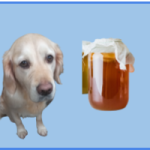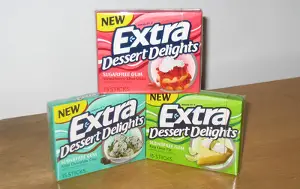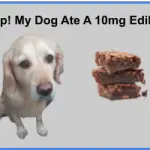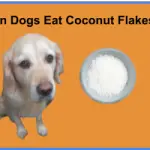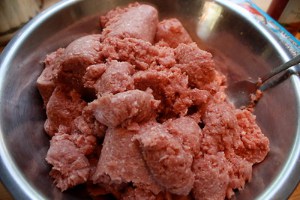
If you are lucky enough to live in a household that owns a dog and a cat, there at some stage you would have been confronted by your dog eating your cat food.
They just can’t help themselves can they?!
And in today’s article, I am going to have a very detailed look at how damaging it is for dogs to eat wet cat food.
But before I do that, I want to share some numbers that demonstrate just how much we love our dogs and cats.
Try as I might, I can’t find any figures to show how many households in the US or UK own a dog and a cat.
In the UK, a 2020 study showed that over 10 million adults owned either a dog or a cat but there were no details on households that owned both sorts of pets.
To put that figure in perspective, 10 million adults is about 25% of the UK adult population.
The figures for the US are that 63% of households own a dog and 42% of households own a cat.
In raw numbers that means that there are about 89 million dogs in the US and 94 million cat.
Now, I want to tackle the most pressing issue.
My dog ate wet cat food? What should I do?
If your dog eats your cat’s wet food and it is a one off accident or occasional treat for them, then there is no need to panic.
There is nothing in wet cat food that is toxic for a dog. The worst you are looking at is an upset stomach for 24 hours or so.
But for most dogs it probably won’t even come to that.
They will have wolfed down the bowl of wet cat food and will have suffered no ill effects- apart from having to listen to their owner get cross with them.
To them it would have tasted so great that they will be looking forward to the next time that your back is turned….
And the reason that wet cat food won’t harm your dog is because they contain almost exactly the same vitamins and minerals that are in wet dog food.
It is just that there are important differences in the quantities and proportions of each of these.
So, as a one off accident, if your dog eats a portion of wet cat food try not to worry about it but have a few poop bags close by!
In the same vein, feeding your dog wet cat instead of a can of dog food as an occasional emergency should do them no harm at all.
Try not to make it a habit because there are important differences in the balances between vitamins and minerals.
If you have run out of canned dog food and you are looking for an alternative, try boiled chicken and rice.
Hopefully, with that information I have eased your nerves.
In the next section, I want to look at the differences between wet cat food and wet dog food.
What is the difference between wet dog food and wet cat food?
Now, there is a right way and a wrong way of going about this, and I have done both!
Firstly, I will show you the right way to find out the important differences between dog food and cat food.
And then I will show you the wrong way of going about it- which might be a bit of fun for some of you who are more detail orientated!
The right way to identify the differences between dog food and cat food
In the US, there is an organisation called the Association of American Feed Control Officials (or the AAFFCO) who are responsible for deciding precisely what types of nutrients should be in a healthy dog diet and what types of nutrients should be in a healthy cat diet.
The list includes how much of each nutrient a dog or cat need.
And because the nutrition needs of a dog or cat change as they grow, the AAFFCO have created a list of nutrients for puppies or pregnant dogs and one for adult dogs.
Likewise for cats there is a list for kittens or pregnant cats and another for adult cats.
And since this is an article which compares dog and cat foods, I will compare the nutritional requirements of adult dogs with adult cats and puppies with kittens.
Nutrition needs adult dog vs adult cat
| Adult Dog | Adult Cat | ||
| Protein | 18% | Protein | 26% |
| Fats | 5.5% | Fats | 9% |
| Minerals | Includes calcium, phosphorus, potassium, sodium, chloride, magnesium, iron, copper, manganese, zinc, iodine, selenium | Minerals | calcium, phosphorus, potassium, sodium, chloride, magnesium, iron, copper, manganese, zinc, iodine, selenium |
| Vitamins | Includes vitamin A, vitamin D, vitamin E, thiamine, riboflavin, pantothenic acid, niacin, pyridoxine, folic acid, vitamin B12, choline | Vitamins | Includes vitamin A, vitamin D, vitamin E, vitamin K, thiamine, riboflavin, pantothenic acid, niacin, pyridoxine, folic acid, vitamin B12, choline, biotin |
What we can see from the chart is that adult dogs need a completely different amount of protein and fat in their diet to adult cats.
Whereas dogs need their food to contain 18% protein and 5.5% fat, adult cats need food that contains 26% protein and 9%.
And even the information in the vitamins and mineral columns are misleading.
On the surface it looks like adult dogs need exactly the same minerals in their diet as adult cats do.
And looking at the charts, they clearly do.
But, if you dig a little deeper, you will find that the exact doses of each of these minerals is different depending on whether it is for a dog or a cat.
And yes, we are talking about tiny differences but if the wrong foods are consistently fed to a dog or cat then in the long term this will cause harm.
The situation with the vitamins is a little different.
Cats need two vitamins added in their diets that don’t need to be added into a dog’s diet.
And these vitamins are vitamin K and biotin.
Nutrition needs puppies vs kittens
| Puppies | Kittens | ||
| Protein | 22.5% | Protein | 30% |
| Fats | 8.5% | Fats | 9% |
| Minerals | Includes calcium, phosphorus, potassium, sodium, chloride, magnesium, iron, copper, manganese, zinc, iodine, selenium | Minerals | calcium, phosphorus, potassium, sodium, chloride, magnesium, iron, copper, manganese, zinc, iodine, selenium |
| Vitamins | Includes vitamin A, vitamin D, vitamin E, thiamine, riboflavin, pantothenic acid, niacin, pyridoxine, folic acid, vitamin B12, choline | Vitamins | Includes vitamin A, vitamin D, vitamin E, vitamin K, thiamine, riboflavin, pantothenic acid, niacin, pyridoxine, folic acid, vitamin B12, choline, biotin |
When it comes to comparing the nutrition needs of puppies to the nutrition needs of kittens, once again the protein and fat content is completely different.
Whereas puppies need 22.5% of their food to be protein and 8.5% of it to be fat, kittens need a food that has a 30% protein content and 9% fat.
And like their adult counterparts, cats and dog broadly need the same vitamins and minerals added to their food, but when you look at the specific amount of each vitamin and mineral to be used, they differ by quite some margin.
For instance, it is recommended that in kitten food there should be 75 mg of zinc in every kilogram, for puppies it is 100 mg of zinc per kilogram.
Kittens need 6668 IU of vitamin A per kilogram, puppies need 5000 IU of vitamin A per kilogram.
And yes you can argue that these are tiny amounts and therefore very small differences but over time…
As I said, looking at the information provided by AAFCO is the right way to find out the important differences between dog food and cat food.
But in the next section, I will illustrate the wrong way of going about things.
And this way unfortunately was the first way that I tried.
The wrong way of trying to find the difference between wet cat food and wet dog food.
The wrong way of doing this is to study the labels of the cans of popular dog and cat food.
I kid you not- I have really got that nerdy.
I have restricted myself to looking at minerals and vitamins.
I will start off comparing the wet cat food, moving onto the wet dog food before comparing the wet cat food with the wet dog food.
And another important question that I want to answer with regard to wet cat food is does it contain anything that might harm or be toxic to your dog?
How does wet cat food differ from each other?
I have looked at two cans of cat food from two different companies. These are two of the most popular brands- Friskies and 9Lives.
Here is the chart which displays all the important information.
Minerals and Vitamins in wet cat food: Friskies vs 9 Lives
| Minerals | Minerals | Vitamins | Vitamins |
| Friskies | 9Lives | Friskies | 9Lives |
| Potassium chloride | Potassium chloride | B1 | B1 |
| Zinc sulphate | Zinc Oxide | B2 | B2 |
| Ferrous sulfate | Ferrous sulfate | B3 | |
| Manganese sulfate | Manganese Oxide | B5 | B5 |
| B6 | B6 | ||
| Copper sulfate | Copper sulfate | B7 | B7 |
| Potassium iodide | B9 | B9 | |
| Sodium Tripolyphosphate | B12 | B12 | |
| Choline Chloride | E | E | |
| Carageenan | A | A | |
| Calcium iodate | K | ||
| Sodium selenite | D3 | D3 | |
| Sodium nitrate |
Firstly, let’s think about the minerals.
There are three minerals that are in both cans of food.
And they are:
Potassium Chloride
Ferrous sulphate
Copper sulphate
As these minerals are in both cans of food, they can be considered to be essential to a cat’s diet.
There are a further two minerals which are very similar (but not exact) that appear in both cans of food.
The can of Friskies contains zinc sulphate and manganese sulphate.
Whereas the can of 9Lives contains zinc oxide and manganese oxide.
These are highlighted in blue.
The interesting thing is why one manufacturer would use sulfates, whereas the other company uses oxides.
And I don’t have an answer to that!
Finally, there are six minerals that only appear in the can of 9Lives wet food and don’t appear in the can of Friskies.
And they are:
Sodium Tripolyphosphate
Choline Chloride
Carageenan
Calcium iodate
Sodium selenite
Sodium nitrate
And since these minerals don’t appear in both cans of food, they cannot be considered to be essential to a cat’s diet.
How does wet dog food compare with each other?
In my chart below, I show the minerals and vitamins in two different brands of dog foods- Pedigree and Nature’s Recipe.
Pedigree Choice Cuts vs Nature’s Recipe
| Minerals | Minerals | Vitamins | Vitamins |
| Pedigree | Nature’s Recipe | Pedigree | Nature’s Recipe |
| Potassium Chloride | Potassium Chloride | Choline chloride | Choline chloride |
| Magnesium sulfate | Magnesium sulfate | Vitamin E | Vitamin E |
| Zinc sulphate | Zinc sulphate | Thiamine mononitrate B1 | Thiamine mononitrate B1 |
| Copper proteinate | Copper proteinate | Calcium pantothenate B5 | Calcium pantothenate B5 |
| Potassium iodide | Biotin B7 | ||
| Manganese sulphate | Manganese sulphate | Riboflavin B2 | Riboflavin B2 |
| Selenium | Vitamin A | Vitamin A | |
| Copper sulphate | Copper sulphate | Vitamin D | Vitamin D |
| Zinc protein | Vitamin B12 | Vitamin B12 | |
| Ferrous sulphate | Vitamin C | ||
| Iron proteinate | Niacin B3 | ||
| Manganese Proteinate | Folic Acid B9 | ||
| Calcium iodate | B6 | ||
| Sodium Selenate |
Looking at the minerals first, these two brands of canned dog foods both contain the same six minerals.
And they are:
Potassium chloride
Magnesium sulphate
Zinc sulphate
Copper proteinate
Manganese sulphate
Copper sulphate
Because these minerals are contained in both cans of food, it is safe to say that they are recognised as an essential part of a dog’s diet.
There are another eight minerals that are either in the Pedigree food or Nature’s Recipe but not in both.
And they are:
Potassium iodide
Selenium
Zinc protein
Ferrous sulphate
Iron proteinate
Manganese proteinate
Calcium iodate
Sodium Selenate
Because these minerals aren’t in both cans of food, we can assume that these minerals are considered essential in a dog’s diet.
Moving on to the vitamins, there are eight that are contained in both cans of food.
And they are:
Choline chloride
Vitamin E
B1
B5
B2
A
D
B12
Because they are both cans of food, these vitamins should be essential to a dog’s diet.
There are a further five vitamins which appear in either the Pedigree can of food or the Nature’s Recipe can but not in both.
And the five vitamins are:
B7
Vitamin C
B3
B9
B6
Because these five vitamins only appear in one can of food, they can’t be considered an essential part of a dog’s diet.
How does wet cat food compare to wet dog food?
Now we get to the crux of the matter, the all important question.
And to get some kind of answer I will use only the minerals and vitamins that both brands of wet dog food and wet cat food have.
| Minerals | Minerals | Minerals | Minerals |
| Wet Dog Food | Wet Cat Food | Wet Dog Food | Wet Cat Food |
| Potassium Chloride | Potassium chloride | Thiamine mononitrate B1 | B1 |
| Zinc sulphate | Zinc sulphate | Riboflavin B2 | B2 |
| Copper sulphate | Copper sulfate | Calcium pantothenate B5 | B5 |
| Manganese sulphate | Manganese sulfate | Choline chloride | B6 |
| Magnesium sulfate | Ferrous sulfate | B7 | |
| Copper proteinate | B9 | ||
| B12 | B12 | ||
| E | E | ||
| A | A | ||
| D | D3 |
From the chart above, you can see that there are lots of vitamins and minerals that are in both canned dog food and canned cat food.
There are more similarities than differences.
In terms of minerals, of the seven minerals that are included in either wet dog or wet cat food, four of them appear in both dog and cat food.
And they are:
Potassium chloride
Zinc sulphate
Copper sulphate
Manganese sulphate
There are three other minerals that only appear in canned dog food or canned cat food.
Two only appear in dog food- magnesium sulfate and copper proteinate.
One only appears in cat food- ferrous sulphate.
So as far as we are concerned, if ferrous sulphate isn’t included in dog food but it is in cats, is it toxic to dogs?
And the answer to that is that it isn’t toxic to dogs in the amounts that are found in cat foods.
Since magnesium sulphate and copper proteinate aren’t included in cat food, are these two minerals toxic for cats?
No, they aren’t.
Moving onto the vitamins that appear in wet dog food and wet cat food, looking at the chart it is clear most vitamins appear in both dog and cat food.
Of the eleven vitamins that appear in either canned dog or cat food, seven vitamins appear in both sorts of food.
Those seven vitamins are: A, B1, B2, B5, B12, D and E.
Choline Chloride is only found in the dog food.
But it isn’t toxic for cats in the amount that is used in canned dog food
And vitamins B6, B7 and B9 are only found in the cat food. But these vitamins aren’t toxic to dogs in the amounts that they are found in canned cat food.
Who regulates what goes in dog and cat food?
In the US, it is the Food and Drug Administration that regulates pet food.
And it seems that there are four elements to it.
Safe to eat
Produced in sanitary conditions
Contain no harmful substances
Labelled truthfully
The department of Agricultural for each state has almost as much responsibility for regulation as the FDA.
In fact it seems that these departments have a much more day to day hands-on role in making sure that pet foods are safe.
In the UK, the responsibility for regulating pet food lies with the Food Standards Agency.
But I couldn’t find any clear guidance on broadly what is and what isn’t allowed in the manufacture of dog or cat food.
In this section we have dealt with who regulates the industry but that hasn’t given us any information about who decides what a healthy dog diet or cat should contain.
And that responsibility lies with AAFFCO (Association of American Feed Control Officials.)
They have a list of all of the nutrients that cats and dogs need in their food.
The list includes how much of each nutrient a dog or cat need.
And because the nutrition needs of a dog or cat change as they grow, the AAFFCO have created a list of nutrients for puppies or pregnant dogs and one for adult dogs.
Likewise for cats there is a list for kittens or pregnant cats and another for adult cats.
And since this is an article which compares dog and cat foods, I will compare the nutritional requirements of adult dogs with adult cats and puppies with kittens.
| Adult Dog | Adult Cat | ||
| Protein | 18% | Protein | 26% |
| Fats | 5.5% | Fats | 9% |
| Minerals | Includes calcium, phosphorus, potassium, sodium, chloride, magnesium, iron, copper, manganese, zinc, iodine, selenium | Minerals | calcium, phosphorus, potassium, sodium, chloride, magnesium, iron, copper, manganese, zinc, iodine, selenium |
| Vitamins | Includes vitamin A, vitamin D, vitamin E, thiamine, riboflavin, pantothenic acid, niacin, pyridoxine, folic acid, vitamin B12, choline | Vitamins | Includes vitamin A, vitamin D, vitamin E, vitamin K, thiamine, riboflavin, pantothenic acid, niacin, pyridoxine, folic acid, vitamin B12, choline, biotin |
What we can see from the chart is that adult dogs need a completely different amount of protein and fat in their diet to adult cats.
Whereas dogs need their food to contain 18% protein and 5.5% fat, adult cats need food that contains 26% protein and 9%.
And even the information in the vitamins and mineral columns are misleading.
On the surface it looks like adult dogs need exactly the same minerals in their diet as adult cats do.
And looking at the charts, they clearly do.
But, if you dig a little deeper, you will find that the exact doses of each of these minerals is different depending on whether it is for a dog or a cat.
And yes, we are talking about tiny differences but if the wrong foods are consistently fed to a dog or cat then in the long term this will cause harm.
The situation with the vitamins is a little different.
Cats need two vitamins added in their diets that don’t need to be added into a dog’s diet.
And these vitamins are vitamin K and biotin.
| Puppies | Kittens | ||
| Protein | 22.5% | Protein | 30% |
| Fats | 8.5% | Fats | 9% |
| Minerals | Includes calcium, phosphorus, potassium, sodium, chloride, magnesium, iron, copper, manganese, zinc, iodine, selenium | Minerals | calcium, phosphorus, potassium, sodium, chloride, magnesium, iron, copper, manganese, zinc, iodine, selenium |
| Vitamins | Includes vitamin A, vitamin D, vitamin E, thiamine, riboflavin, pantothenic acid, niacin, pyridoxine, folic acid, vitamin B12, choline | Vitamins | Includes vitamin A, vitamin D, vitamin E, vitamin K, thiamine, riboflavin, pantothenic acid, niacin, pyridoxine, folic acid, vitamin B12, choline, biotin |
When it comes to comparing the nutrition needs of puppies to the nutrition needs of kittens, once again the protein and fat content is completely different.
Whereas puppies need 22.5% of their food to be protein and 8.5% of it to be fat, kittens need a food that has a 30% protein content and 9% fat.
And like their adult counterparts, cats and dog broadly need the same vitamins and minerals added to their food, but when you look at the specific amount of each vitamin and mineral to be used, they differ by quite some margin.
For instance, it is recommended that in kitten food there should be 75 mg of zinc in every kilogram, for puppies it is 100 mg of zinc per kilogram.
Kittens need 6668 IU of vitamin A per kilogram, puppies need 5000 IU of vitamin A per kilogram.
And yes you can argue that these are tiny amounts and therefore very small differences but over time…
What is a complete diet and how does it relate to wet food?
Most cans of dog (or cat food) are described as “complete”. This means that your dog only needs to eat the right amount of the canned food in order to survive and thrive.
You don’t need to feed them anything else.
And this is why wet dog food contains added vitamins and minerals- in order to make sure that it contains everything that a dog needs.
Most dry dog foods (kibble) are also complete and have added minerals and vitamins.


